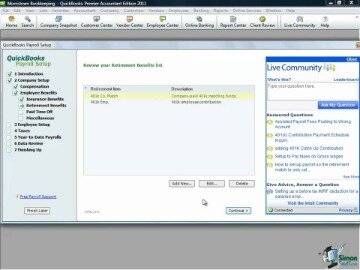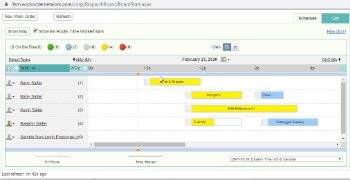Content

Although many companies generate little OCF in some periods, most of them do not go belly up. Calculate FCFFFCFF , or unleveled cash flow, is the cash remaining after depreciation, taxes, and other investment costs are paid from the revenue. It represents the amount of cash flow available to all the funding holders – debt holders, stockholders, preferred stockholders or bondholders. Non-cash Items Are AddedNon-cash expenses are those expenses recorded in the firm’s income statement for the period under consideration; such costs are not paid or dealt with in cash by the firm.
How do we calculate operating cash flow?
- Operating cash flow = total cash received for sales – cash paid for operating expenses.
- OCF = (revenue – operating expenses) + depreciation – income taxes – change in working capital.
- OCF = net income + depreciation – change in working capital.
What Is Operating Cash Flow? preferred to see a cash flow higher than 1.0 as this indicates the company is generating more cash than it is spending. There are many more non-cash items and other changes in assets or liabilities that can change the formula. The important thing is to make sure that all the items are accounted for.
Operating Cash Flow (OCF)
It can also be used to measure a company’s ability to generate cash from its operations. When performing financial analysis, operating cash flow should be used in conjunction with net income, free cash flow , and other metrics to properly assess a company’s performance and financial health. The indirect method uses changes in balance sheet accounts to modify the operating section of the cash flow statement from the accrual method to the cash method. Operating cash flow is different from free cash flow , the cash that a company generates after accounting for operations and other cash outflows. Both metrics are commonly used to assess the financial health of a firm. On the other hand, an increase in accounts payable shows where expenses were incurred and booked on an accrual basis that has not been paid yet.
Magellan Midstream Partners: Two Years Of Stealth Distribution … – Seeking Alpha
Magellan Midstream Partners: Two Years Of Stealth Distribution ….
Posted: Mon, 06 Mar 2023 20:12:23 GMT [source]
Examine Figure 1, which plots the distributions of values for the OCF variables for the bankrupt companies for the last year before failure and similar data for the matched nonbankrupt companies. The distributions overlap considerably, making it difficult to distinguish between the two groups. (The overlaps in charting the CL and TL variables are only slightly less.) Causing the overlap is the large number of nonfailed enterprises whose OCF variables closely resemble those of the bankrupt companies. The graph indicates that although a large number of companies generate little operating cash flow, most of them do not file for bankruptcy.
Operating Cash Flow
In the statement of cash flows, operating net income is reconciled to cash by adding back and subtracting the various cash impacts of operating activities. Sometimes financial analysts prefer to see and evaluate the cash flow numbers instead of other numbers that can indicate the financial health of the company because the cash flow removes certain accounting anomalies. Operating cash flow in specific provides a clearer picture of the current health of the business operations. In the indirect method, net income is adjusted to a cash basis using changes in non-cash accounts like depreciation, accounts receivable, and accounts payable.

Operating cash flow is a key metric for understanding the performance of a business. It provides a comprehensive picture of the current financial condition and operations of the business, by showing both its inflows and outflows of cash. Further, it helps to identify potential trends in cash flow and can help to anticipate future problems. Alternatively, free cash flow can be calculated by deducting interest, CAPEX, income taxes, amortisation, depreciation and other changes in working capital from pre-tax earnings.
What is operating cash flow?
Yet these companies usually have little difficulty meeting their operating cash shortfalls as long as creditors and equity investors share the perception of their growth potential. As previously mentioned, you can calculate operating cash flow by looking at its components, including net income, depreciation and amortization (and other non-cash items), and changes in working capital. Cash Flow From Operations RatioThe cash flow from operations ratio depicts the firm’s efficiency to generate cash from its business operations to meet its short-term obligations. It includes computation of enterprise value to cash flow from operations ratio, cash returns on assets and cash flow to debt ratio.

Operating cash flow, or OCF, refers to the amount of cash a company generates from normal business operations over a specific period of time. Lenders and investors often consider OCF a better gauge of profitability than indicators such as net income. Here’s what goes into this gauge, two ways it is calculated and why it matters. By analyzing the operating cash flow, businesses can identify which activities are generating the most revenue, and which ones are consuming the most cash. For example, a decrease in operating cash flow may be due to an increase in expenses – such as higher wages or increased marketing costs – or a decrease in sales.
Advisory services provided by Carbon Collective Investment LLC (“Carbon Collective”), an SEC-registered investment adviser. For this reason, every public company must report this number in their annual cash flow statement and quarterly financial reports. Operating Cash Flowmeans cash flow from operating activities as defined in SFAS Number 95, Statement of Cash Flows.
- For instance, e-commerce cash flow ratios are typically higher than restaurant cash flow ratios because their costs are lower.
- In other words, the operating cash flow ratio is entirely focused on your normal business operations.
- The operating cash flow ratio is a tool that can be used for small business expense management.
- Total revenue may include money received from non-operating activities, such as gains from investments.
- This analysis is also conducted for inventory, prepaid expenses, accrued expenses, and accrued revenue.
Depreciation expense is an accounting convention that is meant to write off the value of assets over time. As a result, companies should add depreciation back to cash in cash flow from operations. Net income must also be adjusted for changes in working capital accounts on the company’s balance sheet. For example, an increase in AR indicates that revenue was earned and reported in net income on an accrual basis although cash has not been received. This increase in AR must be subtracted from net income to find the true cash impact of the transactions.
Lascia un Commento
Vuoi partecipare alla discussione?Sentitevi liberi di contribuire!